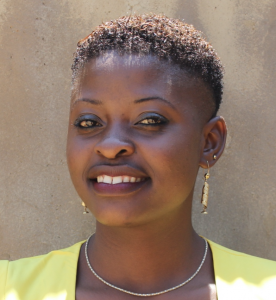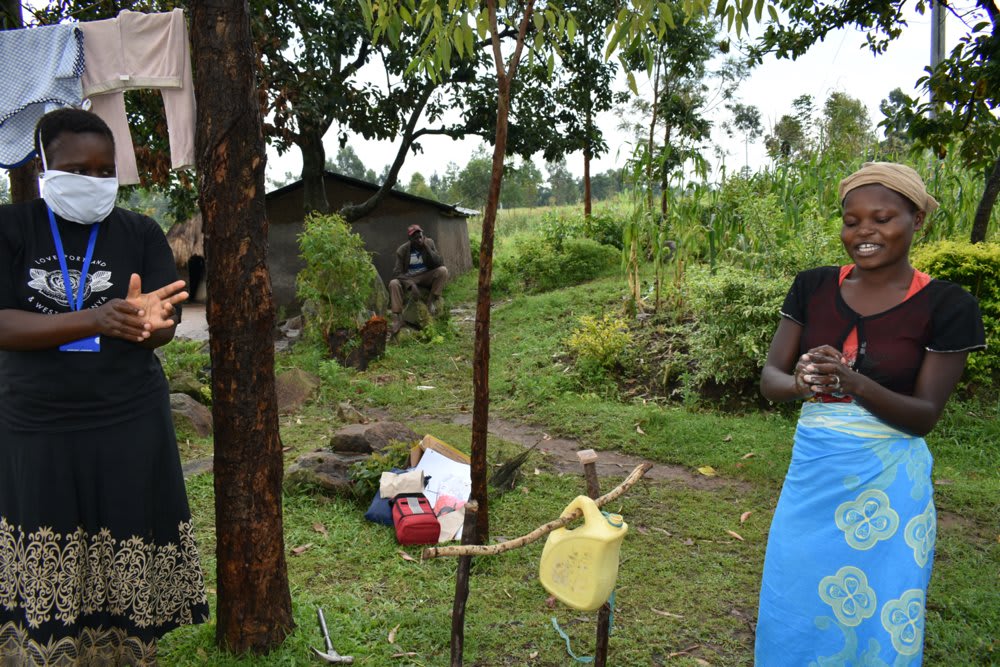Maji Mazuri Spring is located in Burachu B Village of Kakamega County. It serves more than 200 people from 30 households in the area. The community is mostly from the Banyala group of people from the Luhya tribe.
A normal day for individuals living in this community entails different activities such as farming, child rearing, food production, often done by women, and the running of a small business to supplement daily income.
The field officer was passing on the way from a training in the nearby school when she saw women carrying water on their head and a small container in the hand. She stopped out of curiosity to ask where they get water.
Despite the fact that the name of the spring means "good water" in Swahili, the officer found that it is unprotected and unsafe for drinking.
The negative effects of unsafe water are waterborne diseases, such as cholera and typhoid.
"The health status of our community can be ranked at 30%. The reason being that most of our women visit hospital more often than they visit other places like school," Mr. Boniface Masinde said.
"This is because our children suffer stomachaches and diarrhea frequently due to the water. We hope this situation will change once this spring is protected."
The water comes from underground. The spring has stones arranged in an orderly manner for people to step on and gather water using a small container. If an individual mistakenly steps into the water it stirs up the mud at the bottom. As a result, the people must wait for about 30 minutes for it to settle so that they can draw water again.
The containers used to get water are 20-liter jerrycans, carried by adults. Children carry smaller 5 to 10-liter containers. The containers do not have covers because community members think it is easier to empty the containers and immediately back to the spring for another round of water collection.
The water gathered is stored in 20-liter jerrycans, which at the same are used to gather water. Water is also stored in open buckets mostly for bathing and washing clothes.
Fewer than half of households have latrines. One toilet sometimes serves 3 households, totaling 21 people who use it.
The latrines for most members of this community are in bad shape and it is no better than having to answer the call of nature in the bush. The superstructure and the floor are made of mud and the roofs are of rusted iron sheets.
The large holes in the ground are not favorable to children. It puts them at risk of falling in - leading them to practice open defecation in order to avoid the risk.
This community is special in that its members are cheerful givers. This is apparent by the fact that some people who draw water from this spring come from the neighboring village. In some other areas, this sharing does not happen since community members are selfish.
Here’s what we’re going to do about it:
Training
Community members will attend hygiene and sanitation training for at least two days. This training will ensure participants have the knowledge they need about healthy practices and their importance. The facilitator plans to use PHAST (Participatory Hygiene and Sanitation Transformation), CLTS (Community-Led Total Sanitation), ABCD (Asset-Based Community Development), group discussions, handouts, and demonstrations at the spring. One of the most important topics we plan to cover is the handling, storage, and treatment of water. Having a clean water source will be extremely helpful, but it is useless if water gets contaminated by the time it’s consumed. Handwashing will also be a big topic.
Training will also result in the formation of a committee that will oversee operations and maintenance at the spring. They will enforce proper behavior around the spring and delegate tasks that will help preserve the site, such as building a fence and digging proper drainage. The fence will keep out destructive animals, and the drainage will keep the area’s mosquito population at a minimum.
Sanitation Platforms
On the final day of training, participants will select five families that should benefit from new latrine floors.
Training will also inform the community and selected families on what they need to contribute to make this project a success. They must mobilize locally available materials, such as bricks, clean sand, hardcore, and ballast. The five families chosen for sanitation platforms must prepare by sinking a pit for the sanitation platforms to be placed over. All community members must work together to make sure that accommodations and food are always provided for the work teams.
Spring Protection
Protecting the spring will ensure that the water is safe, adequate and secure. Construction will keep surface runoff and other contaminants out of the water. With the community’s high involvement in the process, there should be a good sense of responsibility and ownership for the new clean water source.
Fetching water is predominantly a female role, done by both women and young girls. Protecting the spring and offering training and support will, therefore, help empower the female members of the community by giving them more time and efforts to engage and invest in income-generating activities.
This project is a part of our shared program with Western Water And Sanitation Forum (WEWASAFO). Our team is pleased to provide the reports for this project (edited for readability) thanks to the hard work of our friends in Kenya.

 Protected Spring
Protected Spring
 Rehabilitation Project
Rehabilitation Project















































